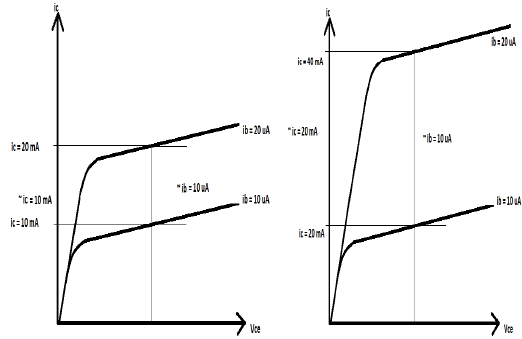


This type of bias is preferred during the stabilization of the Q-point against the temperature changes. In this, the resistor of the base is collected across the collector rather than connecting it to the supply.

In this way, the Q-point can also be monitored. If the values of the resistance are varied based on it the current at the terminal base can be adjusted. In this type of bias, the connection of the single power supply will be maintained between the base and the collector with the help of the two resistors. This bias is also referred to as the base bias. Hence this Q-point concept in the active region and in the other modes in order to make it stable there is the requirement of the biasing. That is either it should function in completely ON mode or the OFF mode. This type of region is referred to as the saturation region.ĭuring the application of the transistor as a switch, the cut-off mode and the saturation modes are preferred. In this both the junctions must be at the forward mode that is on highly conducting mode. In this, the q-point will be at the center of the characteristics curve so that it is most frequently used during the operations. This type of region is referred to as the active region. In this, the one junction must be kept in the mode of forwarding bias the other will be at the reverse bias. The region formed is defined as the cut-off region. Hence there is no evident supply of the voltages seen. (1) Cut-off regionĪs both the junctions of the transistors are not supplied with any external supply. This biasing leads to the major process of the transistor based on which the regions are classified. The biasing of the bipolar junction transistor is nothing but the application of the external supply of the voltages to the respective junctions involved in it. This represents the equivalent circuit of BJT. Hence the circuit of BJT can be represented by the two diodes with the junction P-N. P-N-P Transistor Equivalent Circuit Representation (BJT)

Hence these diodes lead to the formation of the two respective junctions which further relates to the presence of terminals in it. Equivalent Circuit of BJTĪs the discussion of transistors makes it very clear that the formation of the transistor is due to the involvement of the two diodes connected back to the back of it. In P-N-P the majority of the carriers are holes and in N-P-N the majority of the carriers are the electrons. The working principle remains the same for both P-N-P and the N-P-N transistor but the only difference between them is there majority charge carriers. The amount of generated base current is less compared to that of the currents generated at the emitter and the collector. The emitter current generated is the sum of the base and the collector currents. In this way, the currents at the emitter, base, and the collector are generated. Because of the forward biasing at the base and the emitter the flow of the majority carriers takes place from the emitter to the base.Īs the region at the base is of light doping concentration, not all the majority carriers combine some of them tends to flow towards the collector. As considered the junction of base and the emitter is in the forward bias and the collector-base junction is in revere bias. The three terminals present in the BJT are responsible for the formation of the junctions of the emitter and the base as well as a collector and the base.


 0 kommentar(er)
0 kommentar(er)
